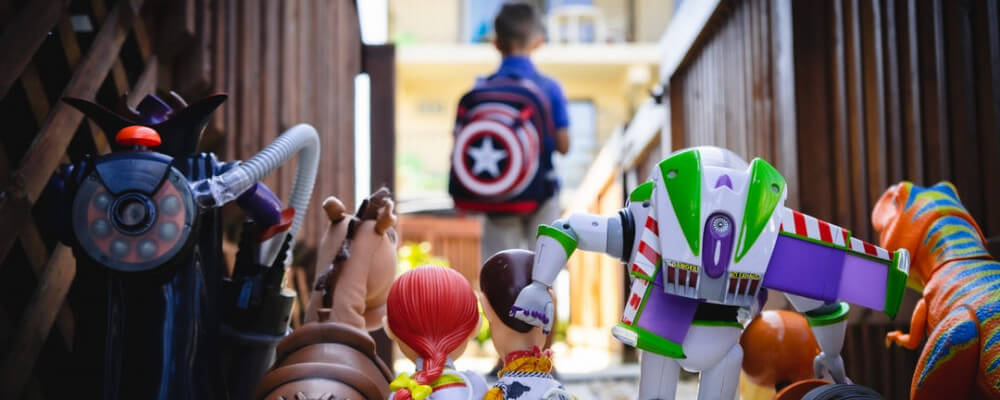What is Visual Storytelling?
Visual storytelling is a simple concept: it’s the skill of combining visual multimedia to communicate a succession of thoughts, concepts, and messages to the reader. Our historical background isn’t unfamiliar with this concept. Prehistoric cave paintings were, arguably, the first form of visual storytelling.
It entails involving viewers through the use of graphics, images, photos, and videos augmented with music, voice, and other audio in order to elicit emotions and capture the readers’ attention. Find out here about “Using Visual Content” in your posts.
Marketers have been aware of these strategies for a long time.
Why Is it important?
Consumer behavior is changing. Readers are more “knowledgeable” than they were before and want information that is relevant and they want it now.
With the average user visiting more than 90 websites per month, and users having an average of 7 social media accounts, website owners should rethink the way they promote their content.
Most marketers have dozens of regularly appearing blogs for posting but quite often are using the same content for their online social platforms. Website owners, authors, and writers should be hungry for change in the way that they get their message across.
Visual Content.
Visual content is not only more eye-catching and memorable, but it is also more engaging for its audience, boosting credibility, strengthening the brand, and eventually increasing income.
If you’re not up to date on visual storytelling in the midst of a culture overloaded with photos and videos, you’re already many steps behind your competitors who are seeking methods to stand out.
Disturbing Data.
Some worrisome data about the genuine influence of visual information have been discovered by studies as displayed by Rasmussen University.
- Visuals are processed 60,000 times faster by the brain than simple text.
- Text with relevant images receives 94% more views than content that does not.
- Visual material makes for nearly 66 percent of social media updates.
- Images in tweets get 150 percent more retweets.
- Every day, more than 100 million internet users watch at least one online video.
- Consumers judge a company’s legitimacy based on its websites layout more than 6% of the time.
The principles of Visual Storytelling.
Although all types of visual storytelling provide easy-to-grasp information ( and aid in reader retention ), it should come as no surprise that video is the most important and easily understood format. While video is fantastic, it isn’t the only kind of visual storytelling that people want.
Regardless of medium, there are a few key rules that should be followed in all types of visual storytelling.
Keep it real.
Because people are bombarded with so much content on a daily basis, viewers have become more adept at recognizing fraudulent or sponsored content. If you want to develop a personal connection with your readers, the lesson for bloggers is to stay true to yourself.
Sensory overload
Audiences have become desensitized to digital information as a result of spending so much of our waking hours online. As a result, viewers are increasingly drawn to visceral, sensory experiences. The more senses a visual piece of material can engage, the more memorable it becomes.
Make a connection.
Using personal visual storytelling to engage with an audience helps them relate to the message being given. Some of the most well-known archetypes, such as the caregiver, the explorer, the hero, and the rebel, may be familiar to you. These become effective instruments for conveying the correct visuals to the people who will relate to them the most.
Relevancy
Providing the correct message at the right moment through the right visual representation is crucial to connecting with an audience. Relevant visual storytelling requires tapping into cultural events, current events, and new trends.
How to Create Outstanding Virtual Stories.

Define the message you want to send.
What is the major point, or points, that you are attempting to communicate? Decide on the supporting benefits or additional points you’re trying to convey after you’ve established your key message.
Even if you don’t mean for them to, images always convey a narrative.
Use Images with your blog.
Make your images simple and discreet. They should only express the most crucial aspects of your original content. Everything else is superfluous and should be removed.
Remember the following three points:
- The perceived quality of your blog or post is made up of the average quality of each visual element included. The total is the sum of its parts.
- The perception of quality will be 50 percent worse if you have an infographic ( Or any visual story ) with great visuals but bad content. The image’s overall quality suffers as a result of detail left unpolished.
- . Even if you don’t want to, remember that you are always telling a story. Choosing to tell the wrong tale by using a low-quality image instead of a high-quality one is a mistake that is commonly made.
Find out more here about “Writing Great Content“
Trim The Fat.
Unnecessary details aren’t allowed in visual storytelling. You have to condense a whole tale into a few pictures.
That is not a simple task. Remove anything that doesn’t add to the story’s worth.
The mind quickly becomes inundated with excessive visual input. Images are processed by the brain, which works according to the law of energy economy, the more to absorb the longer it takes.
Create the Visual Story.
Every great story has a beginning, a middle, and an end, and the narrative arc is the path that the story takes to get there. A story isn’t a presentation that remains flat, such as a random collection of data or visuals.
The scene is described in the first paragraph. Consider it the who, what, and where of the story. Then an event occurs – the why and how of the story – that propels the action toward the story’s climax, which is frequently beset by hurdles or complications.
Readers should be able to see something that makes the climb worthwhile once they reach the top.
The climax, which might occur in the middle or close to the end of the story, is the pinnacle of the arc and comes when the subject reaches the story’s turning point. For instance, a character may achieve his aim, win a war, or discover the truth.

( Freytags Pyramid; Gustav Freytag )
The climax of the story arc is revealed as the action of the story arc draws to a close. What happened when the subject’s luck or disclosure changed?
Occasionally, the descending action will contain a moment of suspense, casting doubt on the final outcome. The final resolution of the subject’s journey is included at the end of the tale arc, as well as any loose ends.
Make your visual story flow.
Images in a visual story must move seamlessly from beginning to middle to end. However, this does not imply that the image must be a movie or even an animated GIF.
With eye-catching imagery and perspectives that lead the eyes to shift from one area to the next, a still photo can depict motion. Special effects are now being used by digital marketers to give movement to their visual narrative.
The brain quickly becomes bored when there is no movement, but by shifting perspective and distance, as well as adding digital effects, an image may hold viewers’ attention for much longer, even if the subject remains the same.
Readers are more likely to stick with a visual story to the end, if the images they see, flow from start to finish, both in terms of the general structure and the usage of a story arc.
Conclusion.
Visual storytelling has the ability to captivate peoples attention while also relaying complex information in an easy-to-understand manner.
Now that you’ve gathered all of this information, you’re ready to put this effective marketing approach to work for your company.
Think about your key message first, then the most significant supporting benefits, and finally the whole story.
You’ll finally be able to harness the true power of visual storytelling marketing like a pro once you merge all of these parts into a visually appealing image.
Who am I?
My name is Stephen and I am the author of this post and owner of Kool Affiliates.
Any or all links on this site may be affiliate links, and if you purchase something through those links I will make a small commission on them.
There will be no extra cost to you and at times due to my affiliation, you could actually save money.
You can read our full affiliate disclosure here.

